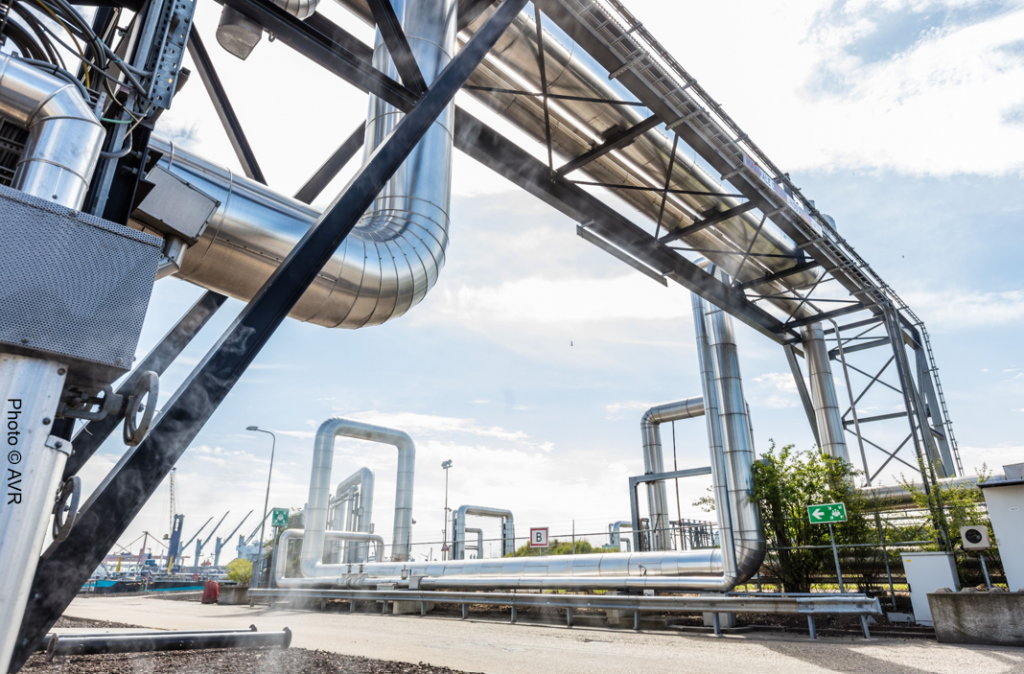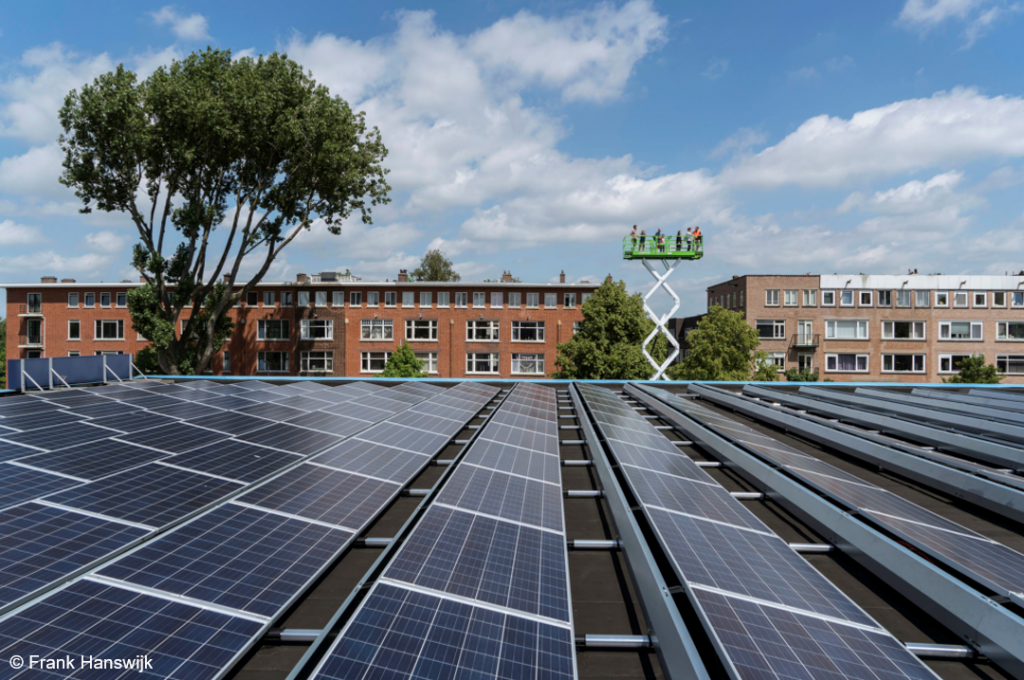4.3.1 Urban Interventions for Energy Flows
Course subject(s)
Module 4. City
Our first two examples show how energy flows can be organized differently in urban areas. Read the two short texts and jot down your ideas with regard to the advantages and disadvantages you see in them.
Example 1: Urban Heat Network
 The “warmte rotonde” or heat network is a large infrastructural project that is currently under development in Rotterdam, The Netherlands. In this project, heat from different sources is transported to a large number of users.
The “warmte rotonde” or heat network is a large infrastructural project that is currently under development in Rotterdam, The Netherlands. In this project, heat from different sources is transported to a large number of users.
One part of the network has been realized. The source of heat is a large waste incinerator in the harbour of Rotterdam. Burning waste creates heat. In this case, the heat is used to heat up water. Via a long underground pipeline system, the hot water is pumped to the centre of Rotterdam, where it is used to heat several office buildings and households.
The plan is to extend this network. Additional sources should be added: geothermal heat, waste heat from different industries in the harbour, but also a power station that creates electricity by burning coal. All the heat together should be enough to heat up a large number of households and offices in the whole area.
Example 2: Photovoltaic Energy Cooperation
 “Blijstroom”, which translates as “happy electricity”, is a local energy collective in Rotterdam, The Netherlands. The collective rents roofs from public and private buildings such as schools or offices and places PV cells on these roofs. The electricity generated is fed into the regular electricity network. The institution that owns the network reimburses the collective for the amount of kWh that they receive. The same applies to home owners who have PV cells on their roof and who produce more electricity than they consume directly. Any inhabitant who lives nearby one of the collective energy roofs can invest in the PV cells and thereby becomes a member of the collective. You can buy half a panel, or ten, or even more.
“Blijstroom”, which translates as “happy electricity”, is a local energy collective in Rotterdam, The Netherlands. The collective rents roofs from public and private buildings such as schools or offices and places PV cells on these roofs. The electricity generated is fed into the regular electricity network. The institution that owns the network reimburses the collective for the amount of kWh that they receive. The same applies to home owners who have PV cells on their roof and who produce more electricity than they consume directly. Any inhabitant who lives nearby one of the collective energy roofs can invest in the PV cells and thereby becomes a member of the collective. You can buy half a panel, or ten, or even more.
Each year, the collective measures precisely how much electricity was produced and sold. All members receive a share of the revenue depending on their share in the PV cells. Costs for maintenance of the PV cells are deducted. So even if you live in the ground floor of an apartment building with no access to a roof, you can – indirectly – become a local producer of energy. And that without the responsibility to clean or repair the PV cells yourself. As this is a collective, all benefits but also drawbacks are shared. In a cloudy year, everybody receives less.
If you like, you can have a look at the website of the cooperation (only available in Dutch).

Circular Economy for a Sustainable Built Environment by TU Delft OpenCourseWare is licensed under a Creative Commons Attribution-NonCommercial-ShareAlike 4.0 International License.
Based on a work at https://online-learning.tudelft.nl/courses/circular-economy-for-a-sustainable-built-environment//.



